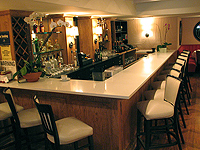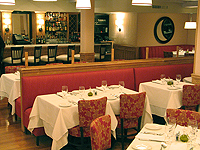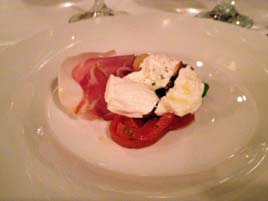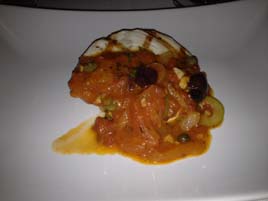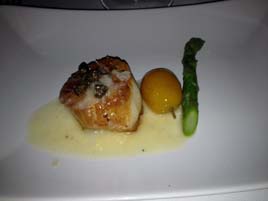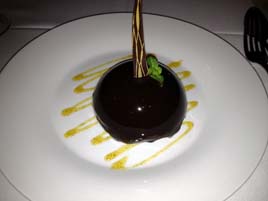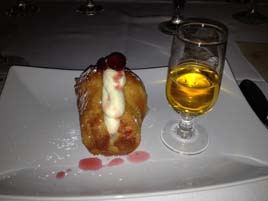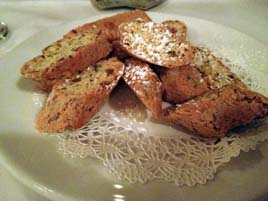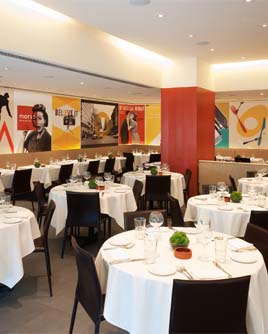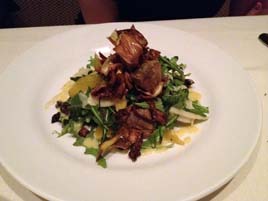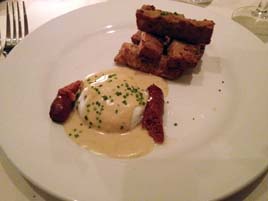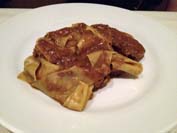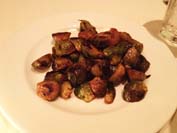Lamb Dinner at Roberta’s
 Sunday, May 27, 2012 at 04:01PM
Sunday, May 27, 2012 at 04:01PM 
Until a few weeks ago, I figured I’d never make it to Roberta’s, Bushwick’s little pizzeria that could. Sam Sifton gave it two stars, and everything I’d read suggested he was right.
But Roberta’s had conditions I was unwilling to live with: a trip to a neighborhood where there is nothing else of interest to me, for a likely one to two-hour wait at most normal times. Reservations are accepted only for an acclaimed tasting menu (served on uncomfortable benches) that’s offered to just eight people a week.
I was eager, but not that eager.
 Then Roberta’s launched a series of theme dinners, one per month over the summer, starting with lamb. Served in the outdoor garden, these are open to about 35 people, with tickets sold online. (Click on the image for a larger copy of the menu.)
Then Roberta’s launched a series of theme dinners, one per month over the summer, starting with lamb. Served in the outdoor garden, these are open to about 35 people, with tickets sold online. (Click on the image for a larger copy of the menu.)
Just like a concert, you’ve got to be really sure you can make the date, but the price was remarkable: $95 per person including service, tax and tip, for five courses plus paired wines.
I’ll cut to the chase: the food and service were exceptional for the price. I still wouldn’t trundle out here without a reservation. With one, it was a most enjoyable evening.

We arrived a bit early and had drinks in the outdoor Tiki Bar (above).
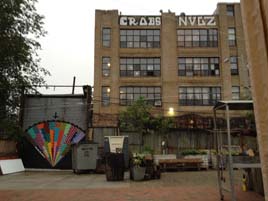
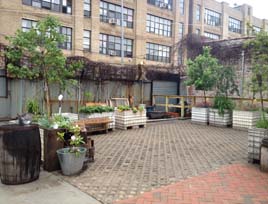
The outdoor garden (above left) is a post-industrial junkyard, scattered with planters (above right). You’re led to believe that the chef is growing his own produce, but is he? Given the volume at Roberta’s, could such a small garden really supply much more than just a minimal amount of what they consume?

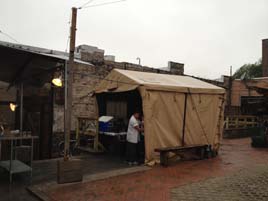
It poured for most of the day. Had the weather not cleared up, dinner would have moved inside to Blanca, the new event space next door, which could be the sign of where Roberta’s is headed. There’s a restroom in there with a fancy heated toilet seat, and a sleek, modern kitchen, and counter seating on plush bar stools. It’s everything the original Roberta’s is not.
I asked about the use of that space. “It’s all part of the Roberta’s empire,” a server said.
Anyhow, the rain abated, so they stuck to the original plan. Dinner was served in an outdoor tent, with two long tables, wooden benches, and burlap taking the place of placemats. Chef de cuisine Max Sussman (above left) cooked in an outdoor oven while legs of lamb twirled on a spit, and another cook worked in a smaller tent nearby (above right).
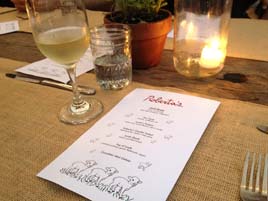

The food was all very good. We started with Pea Soup (above right) with morels and sunflower oil.
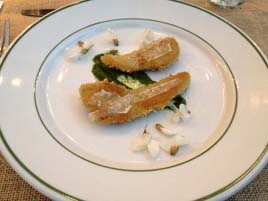

Then came breaded Lamb’s Tongue (above left) with watercress, locust flower, and capra sarda (a goat cheese) and a Garden Salad (above right) with aged gouda, radish, and snap peas.


Lamb Shank (above left) with yogurt and pickled ramps was a bit of a letdown. But Leg of Lamb (above right), served family-style, had a rich, smokey flavor imparted from the roasting spit, with roasted poatoes, broccoli rabe, and garlic flatbread (below left).


Dessert, a cucumber mint gelato (above right) was just fine, but seemed phoned in.
The beverages included five wines of the sort you might choose for a summer patio dinner: none great, but all good enough for the occasion. For the price I cannot complain, especially as the pours were unlimited.
This wasn’t a typical Roberta’s dinner, but it certainly conveyed a feel for what all the fuss has been about. The food and service were great, but dinner ended past 10:00pm, and the subway ride home took an hour and a half.
“Next time, we need to order a car service,” my girlfriend said.
Roberta’s (261 Moore Street, Bushwick, Brooklyn)
Food: Rustic Italian-American cuisine
Service: Not fancy, but attentive
Ambiance: A post-industrial junkyard
Rating: ★★
Why? It’s a pain to get here, but there’s nothing quite like it in New York

























